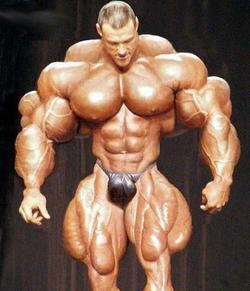Creatine will do nothing to stop the progressive loss of nerves that decreases the number of active muscle fibers. However, it can help you to exercise harder and longer, so it may help you to do the intense workouts that will build larger and stronger muscles. At this time we do not know whether there are any deleterious side effects in older people from taking creatine, so I cannot recommend it.
****************
Creatine can help to strengthen muscles, but athletes who take these supplements need to know how much they can take safely before they harm themselves. When you exercise and your muscles get as much oxygen as they need, they burn carbohydrates, fats and protein for energy. When you exercise so intensely that you cannot get all the oxygen you need, your muscles use creatine and ATP. So when you exercise so intensely that you can't get enough oxygen, you can delay fatigue by taking creatine and it allows you to do more work, which makes you stronger.
The body of a 160 pound man contains 120 grams of creatine and he takes in and uses about two grams a day. No good studies have been done to show what amounts are safe to take beyond what your own body makes, so let the buyer beware. Creatine may allow you to lift more weights and make you stronger, but it may harm you. Taking too much creatine can cause weight gain, increased insulin production and possibly kidney damage. High levels of insulin constrict arteries to cause heart attacks and affect the brain and liver to make you fat. The chemical process of extracting creatine in the laboratory forms toxic contaminants called dicyandiamide and dihydrotriazines, that have to be removed before humans can take them safely. The industry that distributes creatine is unregulated and you have no way to know what you are actually buying.






 14:20
14:20
 kaniamazdar
kaniamazdar











